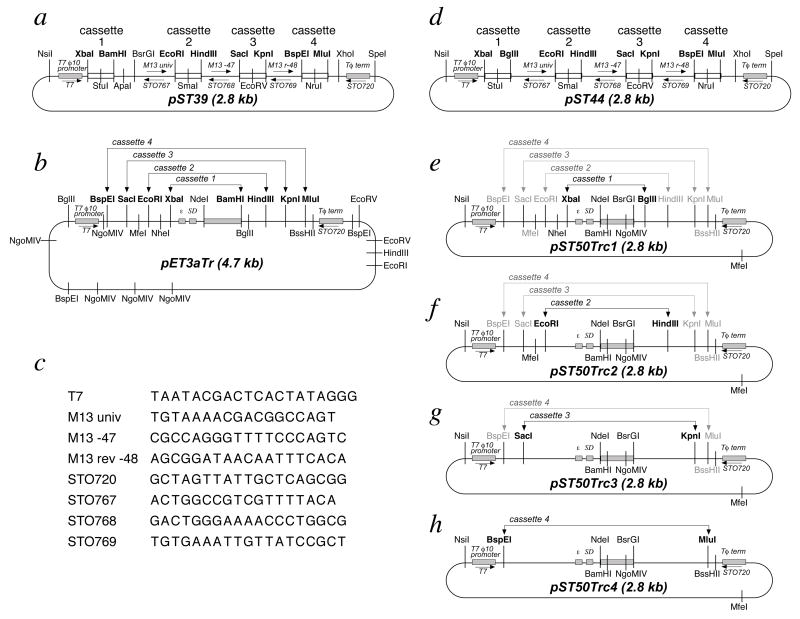Figure 4.
Plasmid maps for the vectors in the pST39 and pST44 polycistronic expression systems. The location of the T7 ø10 transcription promoter and terminator are shown for each of the plasmids, while the translational enhancer (ε) and Shine-Dalgarno (SD) sites are shown for the transfer plasmids pET3aTr and pST50Trc1–4. The restriction sites which define the 4 polycistronic cassettes of pST39 and pST44 are shown in bold, as are the sites on the corresponding transfer plasmids. A specific plasmid is available for each cassette in the pST50Trc1–4 transfer plasmids. For example, pST50Trc1 would typically be used as the donor plasmid for subcloning the XbaI-BglII translation cassette into cassette 1 of the pST44 polycistronic expression vector. However, the same flanking restriction sites (shown in gray) for subcloning the translation cassette as EcoRI-HindIII (for cassette 2), SacI-KpnI (for cassette 3) and BspEI-MluI (for cassette 4) fragments are also available in pST50Trc1. This allows pST50Trc1 to function as the donor plasmid for all 4 cassettes if desired. All occurrences of each of the selected restriction sites in the plasmids are shown. Priming sites for sequencing or PCR primers are depicted as labeled arrows, with their sequences shown in (c). The β-lactamase gene present in each of the plasmids confers ampicillin resistance (not shown).

